We’ve all heard Bhutan is beautiful, but is the cost of a trip to Bhutan worth $250 per day? After three weeks in Bhutan, here are my honest thoughts on whether or not the Bhutan trip cost is worth it.
$200 to $250 per day, per person. At least. That’s how much a trip to Bhutan costs. So is tourism in Bhutan worth the money?
Compared to budget-friendly neighbors such as India and Nepal, Bhutan’s trip cost is steep. Yet there’s no denying Bhutan’s tourism allure, and I know many of you are beyond intrigued. Ever since I entered the country, I’ve been fielding the same question over and over:
“Is a trip to Bhutan worth the $250 tourism fee per day?”
After more than three weeks of travel in Bhutan—and obsessively assessing whether or not the Bhutan tourism fee is fair—I have my final answer to the question whether Bhutan is worth the cost of $250 a day:
If you can afford it, absolutely.
Index: What you need to know about the cost of travel to Bhutan
- How much does a Bhutan trip cost?
- Why is Bhutan’s tourism fee important?
- Why I think Bhutan is worth the trip cost
- To travel to Bhutan or not to travel to Bhutan?
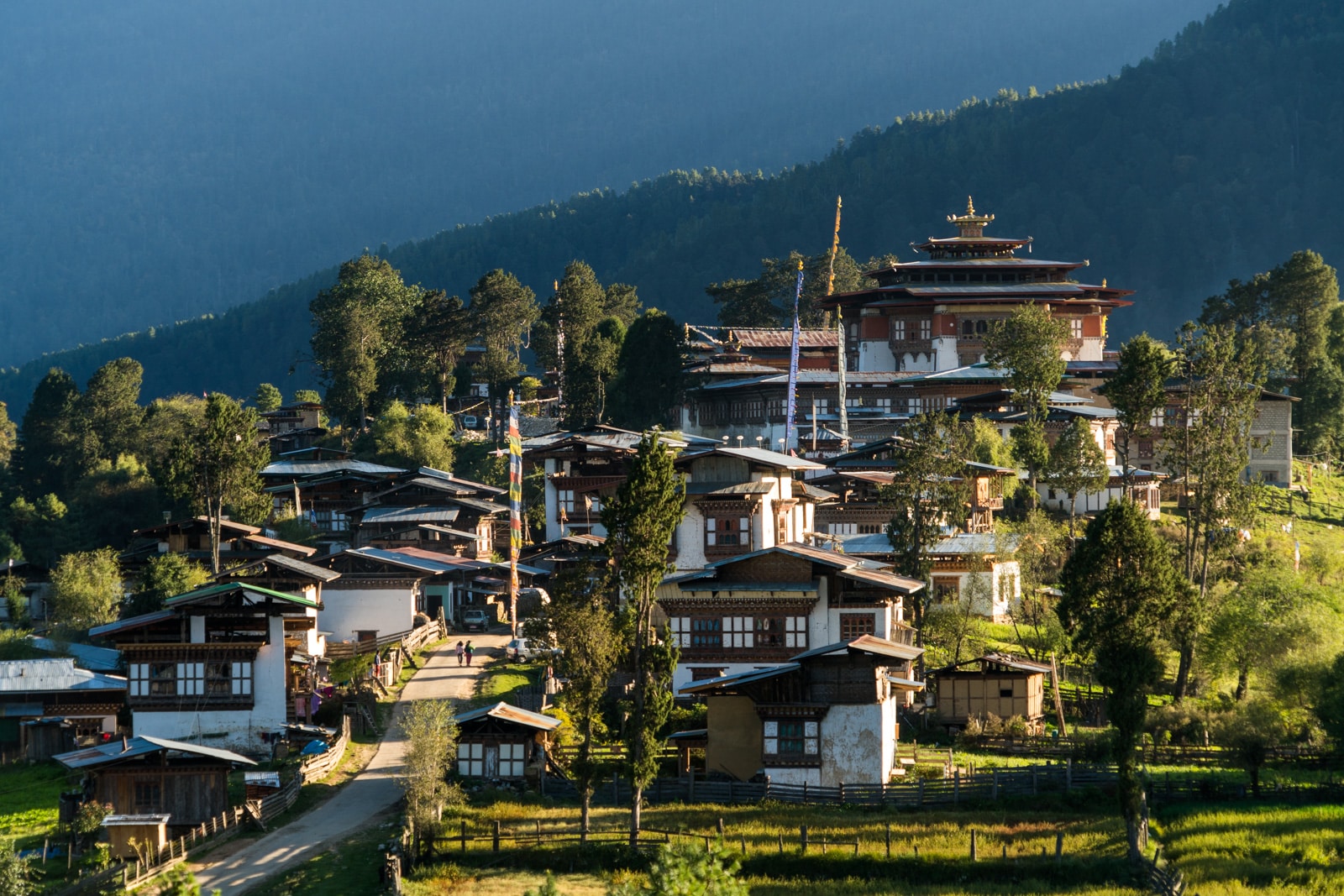
Monastery atop a hill overlooking Phobjikha Valley, surrounded by small but pretty Gangtey village.
How much does a Bhutan trip cost?
I’ll elaborate on why Bhutan is worth it in a hot second, but first, let’s clear up some misconceptions about the cost of travel to Bhutan:
How much does it cost to travel to Bhutan?
Basically, the cost of a trip to Bhutan doesn’t have to exceed the minimum daily fee.
The minimum daily fee for most foreigners is:
- $250 per person per day from March – May, and September – November (high season)
- $200 per person per day from December – February, and June – August (low season)
Many people are confused because they think Bhutan’s daily tourist fee is a cost on top of other travel costs, but the opposite is true: it’s basically an all-inclusive trip cost!
However, it’s possible you’ll need to pay more depending on how you will be traveling:
- Solo travelers: An extra $40 per day to the standard cost of traveling in Bhutan.
- Two person private tour: An extra $30 per day, per person.
- Luxury travelers and high-altitude trekkers: Those looking for more luxurious accommodations in 5-star hotels and resorts should expect to pay several hundred dollars more per day. The same goes for those interested in trekking with high-quality gear and camping equipment.
There are some discounts available, primarily for students and children ages 5 – 12. See the Tourism Council’s website for more details.
Bhutan trip cost for Indians, Bangladeshis, and Maldivians (regional travelers)
Indians, Bangladeshis, and Maldivians used to be exempt from the daily fee requirements, due to reciprocity demands between governments.
However, starting July 2020, they will have to pay 1,200 Rs per day (roughly $16) to visit Bhutan. As of 2021, Indian, Bangladeshi, and Maldivian tourists are also now required to be part of an organized tour when traveling to Bhutan. The main difference is that they do not have to pay the same minimum daily rate as tourists from other countries.
The reason for this price increase is that in recent years, regional tourism to Bhutan exploded—more than 60% of tourists to Bhutan were Indian in 2018—threatening Bhutan’s system of low traffic, high value tourism. There were also many concerns about the environmental impact of regional tourists as pollution increased at tourist sites and the number of vehicles on the road skyrocketed. These new regulations are an attempt to manage the new flows of tourists while preserving Bhutan’s original tourism strategy.
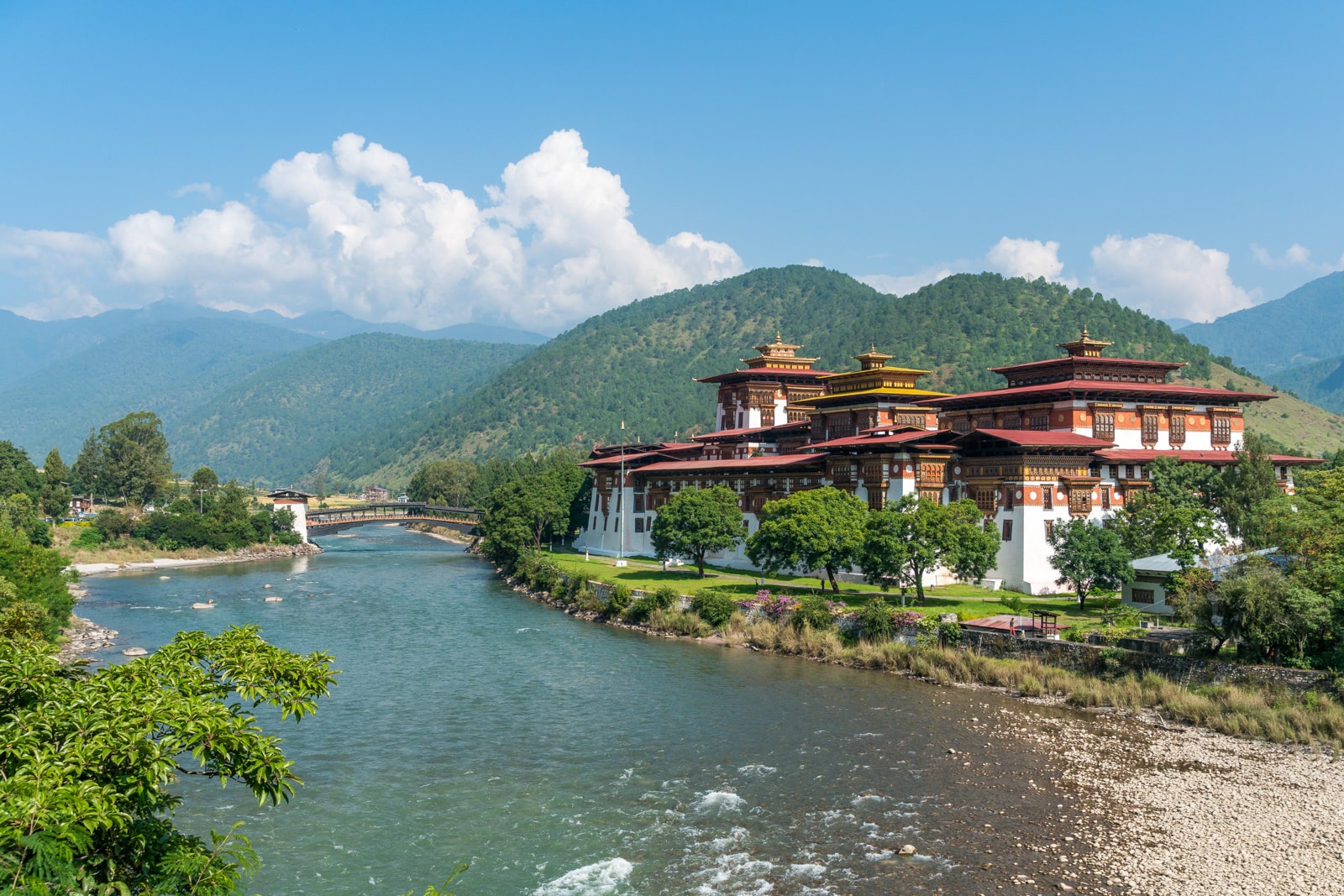
Punakha dzong, the largest fortress in the country
What’s included in the Bhutan tourism fee?
Many people assume Bhutan’s tourist fee is something paid on top of other expenses in the country. Not so!
The daily fee for Bhutan should include:
- Visa to Bhutan
- Licensed Bhutanese guide from an official Bhutanese tour operator. My guide was incredibly chill, helpful, and a great companion throughout my 3+ weeks in Bhutan.
- Driver and transportation. Usually, this means a comfortable and new 4×4, or a medium-sized tour bus. Internal flights are not covered.
- Accommodation. Hotels are all at least 3-stars, clean, and often spacious with impeccable service. Homestays and camping can also be requested.
- Entrance fees to tourist sights
- Food and drinks. Hotel restaurants are the norm, but if your tour group is small, ask to eat at local restaurants. Your guide should grant your wishes without any extra cost, but you’ll have to pay for any alcohol. (Protip: Bhutanese wine not recommended.)
- Trekking gear. If you’re going on a trek, that is.
- All taxes within the country
Basically, the Bhutan tourist fee covers all of your necessary expenses within Bhutan. The only common costs not covered by this fee are:
- Flight to/from Bhutan
- Souvenirs
- Alcohol
- Tips for guides and drivers (expected at around 10% of the tour cost)
Once you’ve paid your tour company, you could theoretically waltz into Bhutan without cash, no problem… though your guide will deserve a tip by the end of your trip!
For more information about what is officially included in the minimum daily cost of travel to Bhutan, see the description on the official Bhutan Tourism website.
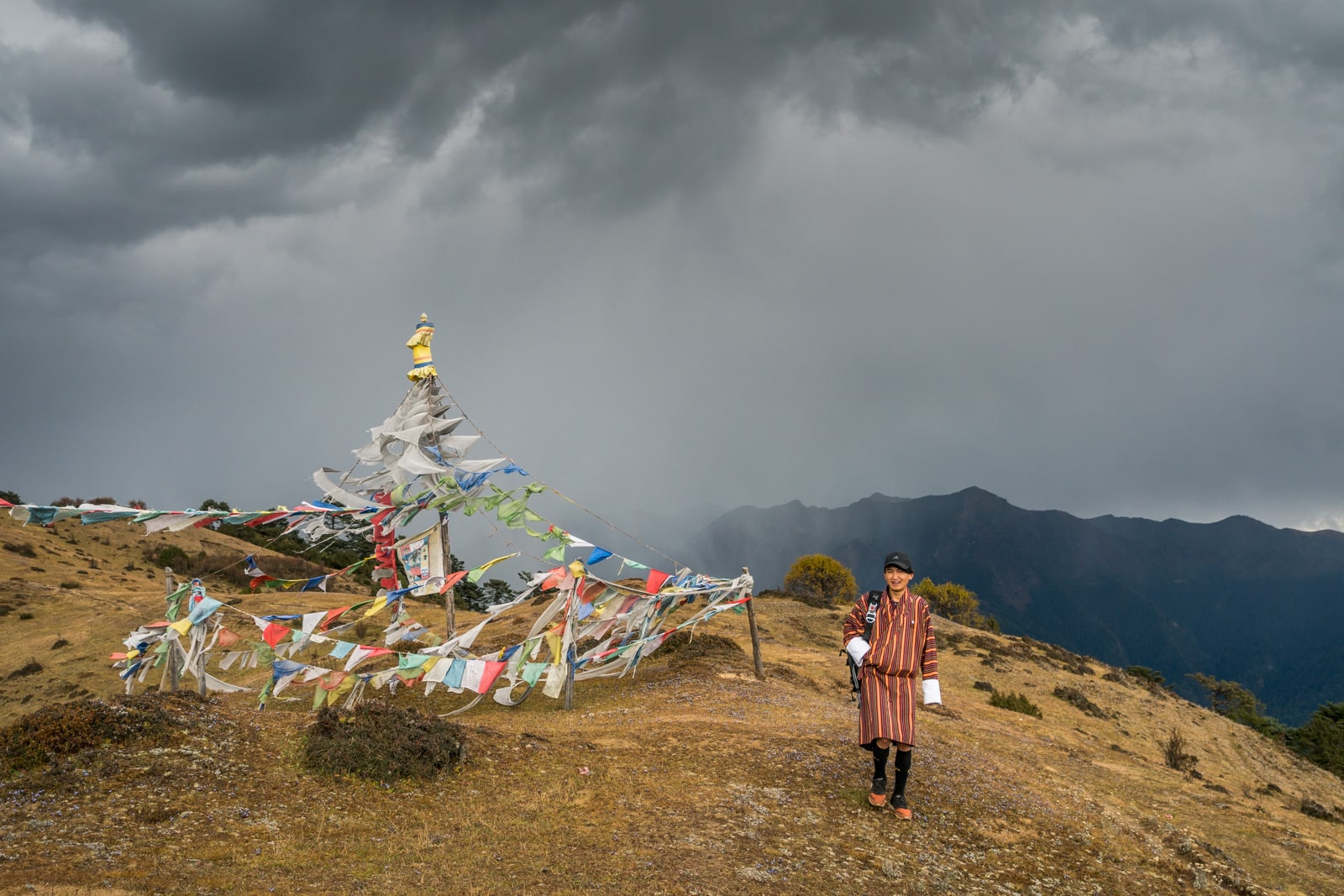
My guide and friend, Karma, who most definitely deserved all the tips by the end of my 3+ week adventure
Where does revenue from the Bhutan tourist fee go?
Ah, the important question!
Obviously, a slice of the pie goes to the tour agency, guides, drivers, hotels, etc. What’s more interesting is the $65 per day going to the government’s “sustainable development fee”.
Fancy name aside, this means around 30% of your money goes to Bhutan’s government. Though no government is totally transparent in its spending anywhere in the world, Bhutan’s government is legitimately committed to offering its citizens free health care, education, infrastructure, and more.
Even to the average tourist, the results of this money are visible. I had extended English conversations with 12-year-olds, there’s a slick new highway being built across the country, and I was told stories of Bhutanese people being sent abroad for medical treatment… free of cost!
Beyond my own personal experience, actual data illustrates a similar picture: despite the fact that many people in Bhutan live in extremely remote regions and depend on agriculture for income, 99% of citizens have access to clean water, 99% of houses have electricity, primary school enrollment is at almost 99% (and 95% of students make it to the last grade of school)… and I haven’t even mentioned Bhutan’s continued commitment to being the only carbon neutral country in the world and maintaining at least 60% tree coverage of the country at all times.
Skeptical? Still curious? It’s a bit dense, but this 2018 UN sustainable development report (PDF) has all the stats about Bhutan’s successes and shortcomings.
But why is Bhutan’s tourist fee that important?
Some of you have griped to me that it’s not a tourist’s responsibility to play charity, but consider Bhutan’s situation:
Bhutan is a land-locked country of only 700,000 people, with limited options for export or industry due to its remote, mountainous terrain. Much of the country’s population is poor, and 8% live below the international poverty line. The government is grappling to maintain Bhutan’s well-preserved culture in the face of rapid development and modernization.
Tourism is one of the very few major industries in Bhutan, but unbridled tourism in Bhutan can quickly consume the country and its culture… especially when the country is home to less than one million people.
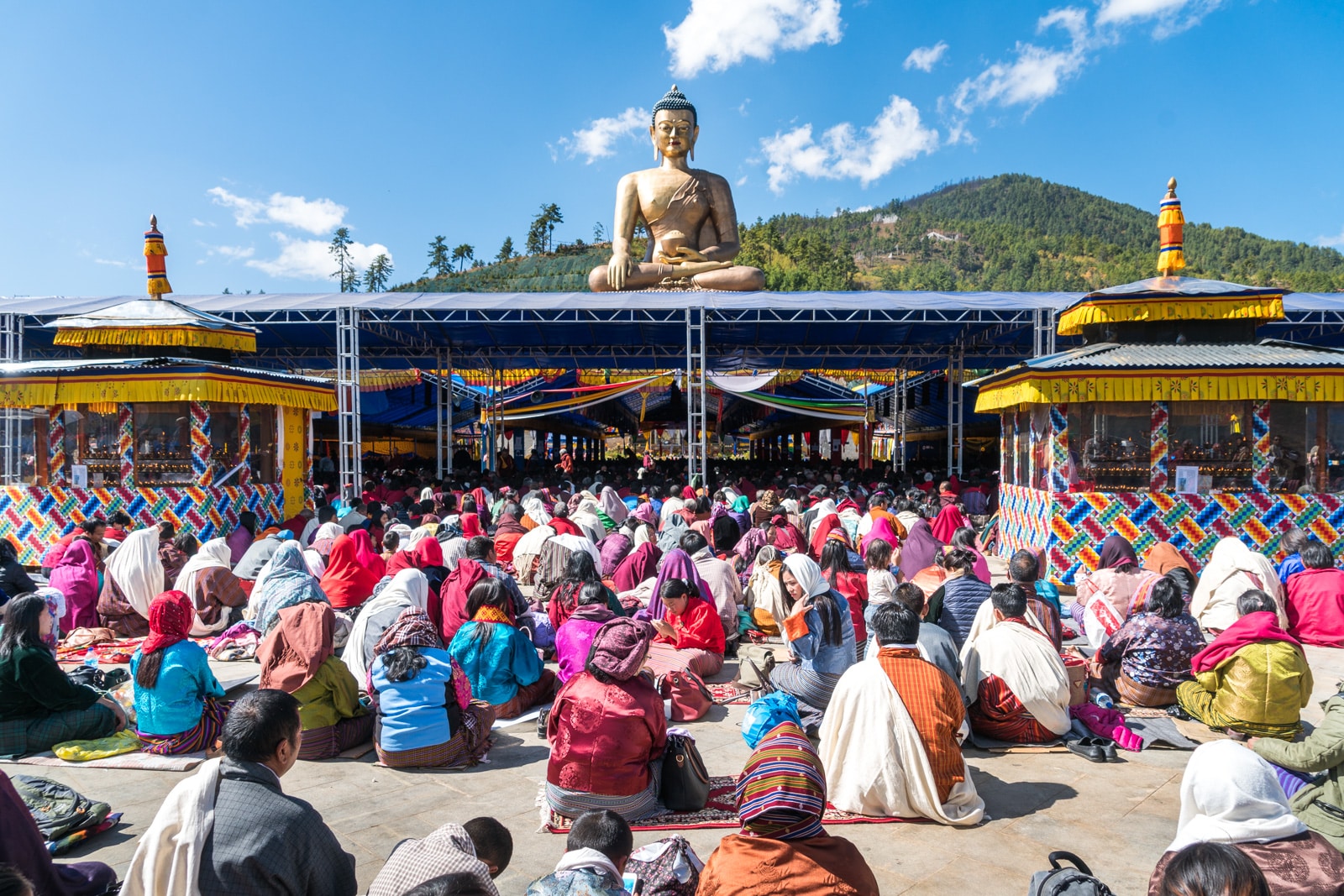
Thousands of people coming to listen to the teachings of a renowned monk at Buddha Point in Thimphu
Bhutan doesn’t want to become the next Venice sinking under the weight of millions of holiday goers, nor attract the hordes of culturally insensitive backpackers who flood Southeast Asia, Nepal, and India. The country wouldn’t be the same if drunk backpackers in elephant pants staggered by locals in traditional gho and kira. And that’s coming from someone who wobbled ‘round Asia in said pants years ago. Yes, I admit it.
Bhutan makes great efforts to adhere to sustainable tourism standards, and we should laud their efforts in this age of destructive mass tourism. Though their system isn’t perfect, Bhutan’s daily tourist fee is a tried and tested method of limiting tourist numbers, while simultaneously ensuring tourism’s revenues reach the entire population and the majority of tourists are somewhat responsible travelers. Critics say limiting tourism to wealthy travelers is elitist—I don’t disagree—but if the system works for Bhutan and locals benefit from it, I don’t think it’s our place to demand otherwise.
If you’re still upset about the daily cost of traveling in Bhutan, remember that travel is a privilege, not a right. It’s well within the country’s rights to stem the flow of mass tourism using whatever means works best.
Read more: 27 ways to travel more responsibly
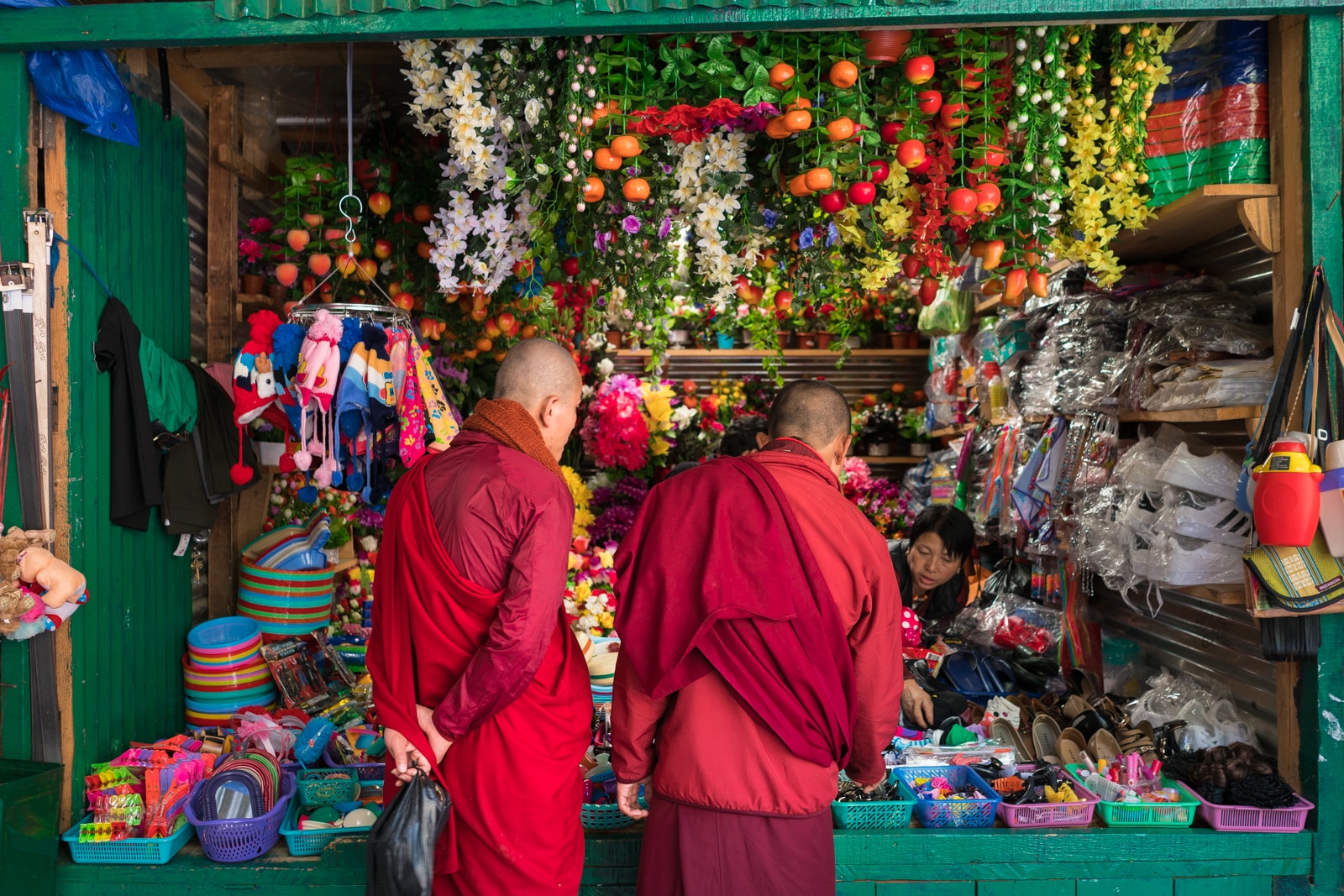
Shopping time for some monks at a local market
Why Bhutan is really worth your money
Okay, okay, it’s time for me to get off my soapbox. Although sustainable tourism is imperative, Bhutan’s forward-thinking policies aren’t the only reason it’s worth your money. You’ve stuck with me this far, so it’s about time I give you the answer you’ve been waiting for.
Why is Bhutan worth your money? Because it’s freakin’ beautiful, and there’s no other place in the world like it.
You can while away afternoons in Bhutan listening to the patter of shoes slapping stone amongst the white walls of dzongs, fortresses. Sometimes it’s a red-robed monk off to say prayers beneath towering statues of demons on the monastery side of the dzong. Other times it’s a woman in a silky kira dress making her way to work in the administrative side of the repurposed fortress.
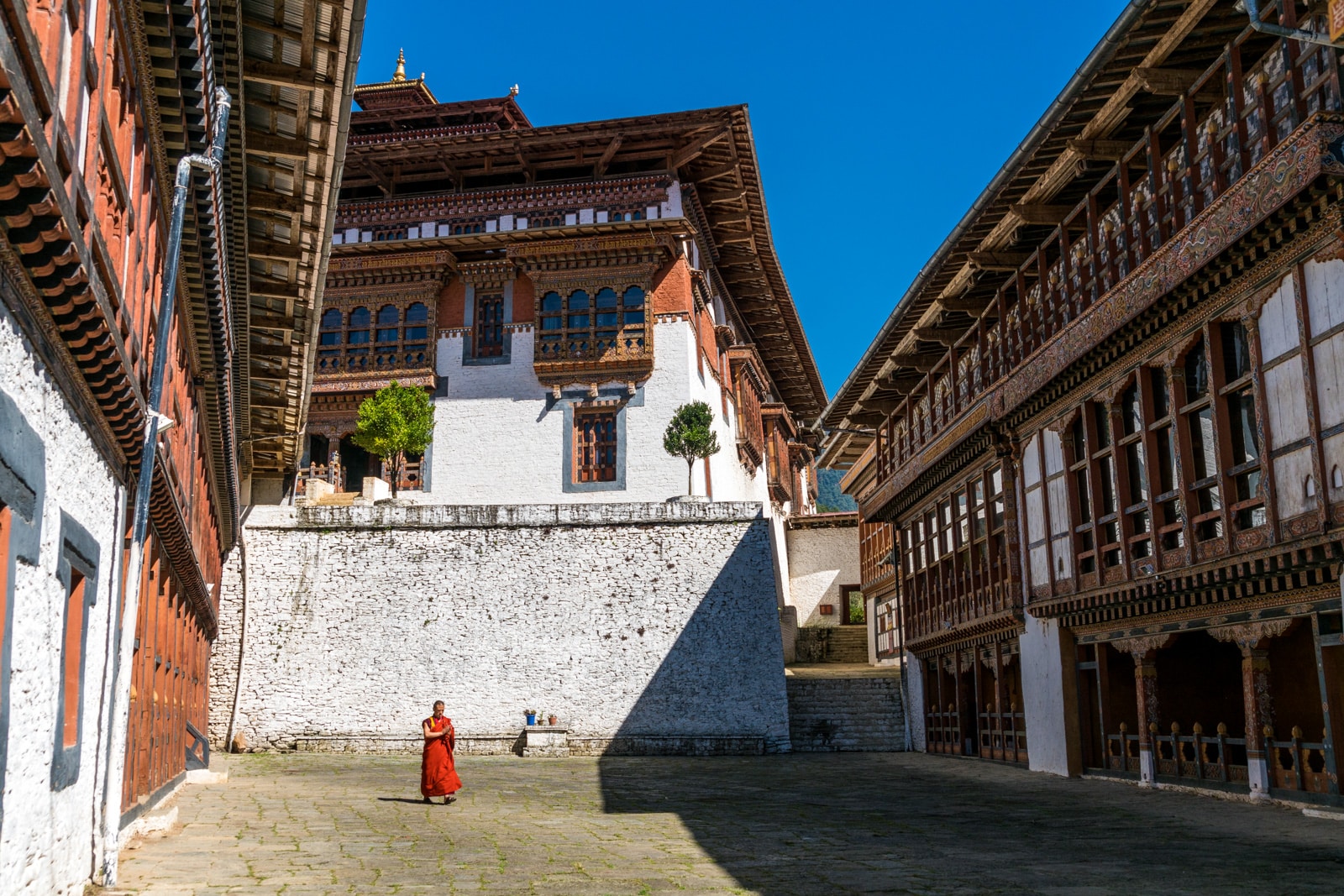
Off to monastic business in the Trongsa dzong
In the capital, Thimphu, you can go sightseeing by day, then trade traditional robes and historic monasteries for a cold cocktail and bumping beats in a nightclub with the country’s hippest youth.
While driving through Bhutan, you can feast your eyes on the houses pretty enough to be mistaken for temples lining the country’s hills. Some are painted with intricate knots and auspicious animals, while others are painted with hairy, ejaculating phalluses. Yes, really.
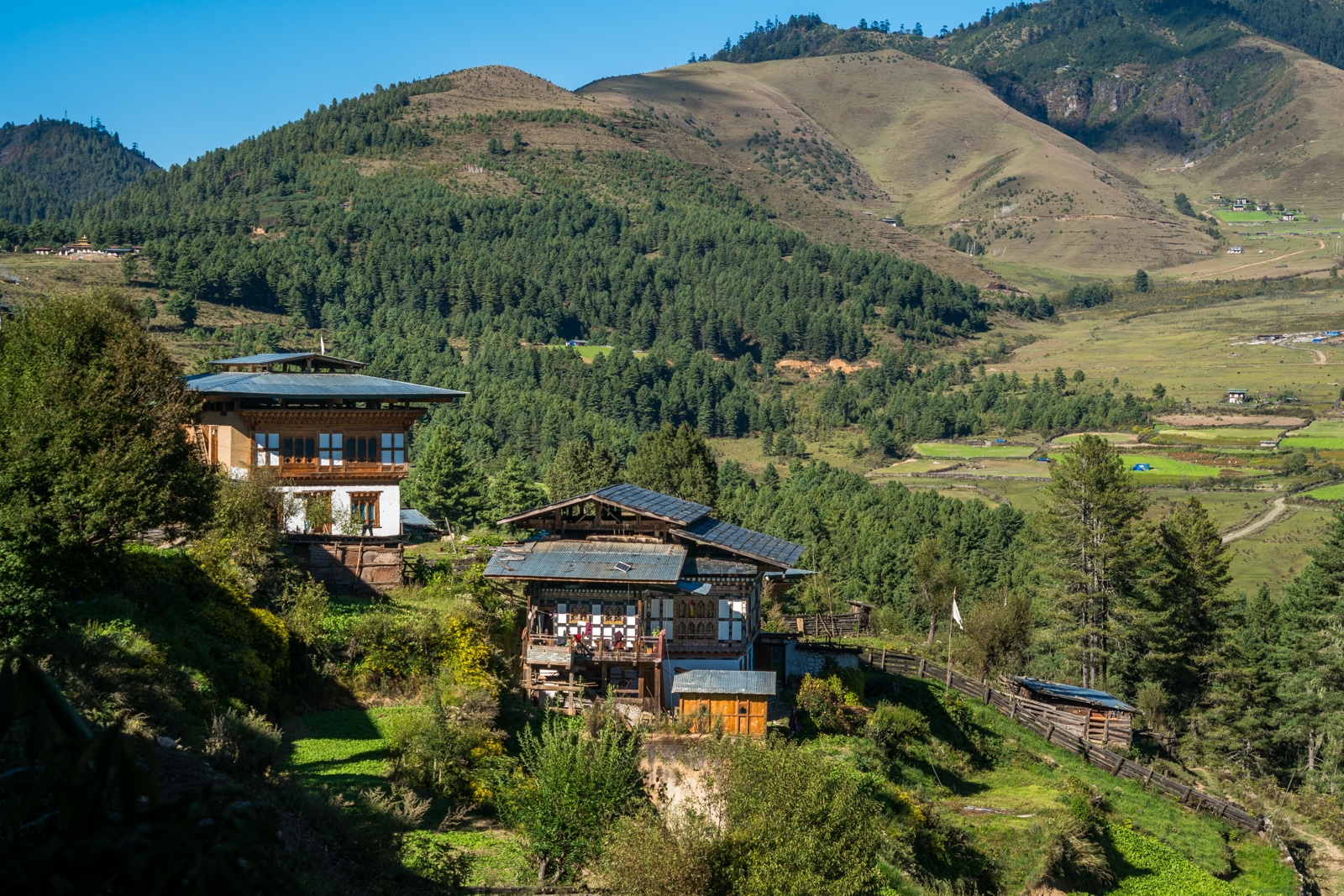
Practically perfect traditional houses in Phobjikha Valley
In Bhutan, you’ll never have to worry about sharing trekking trails. Far from the overcrowded routes of Nepal, even the most popular of Bhutan’s paths are delightfully quiet. The country’s 72% forest coverage means you’ll never go too long without a bit of greenery up above. Even better, Bhutan’s nature is pristine and clean; an experience I certainly haven’t encountered in other South Asian countries (though I have yet to visit Maldives).
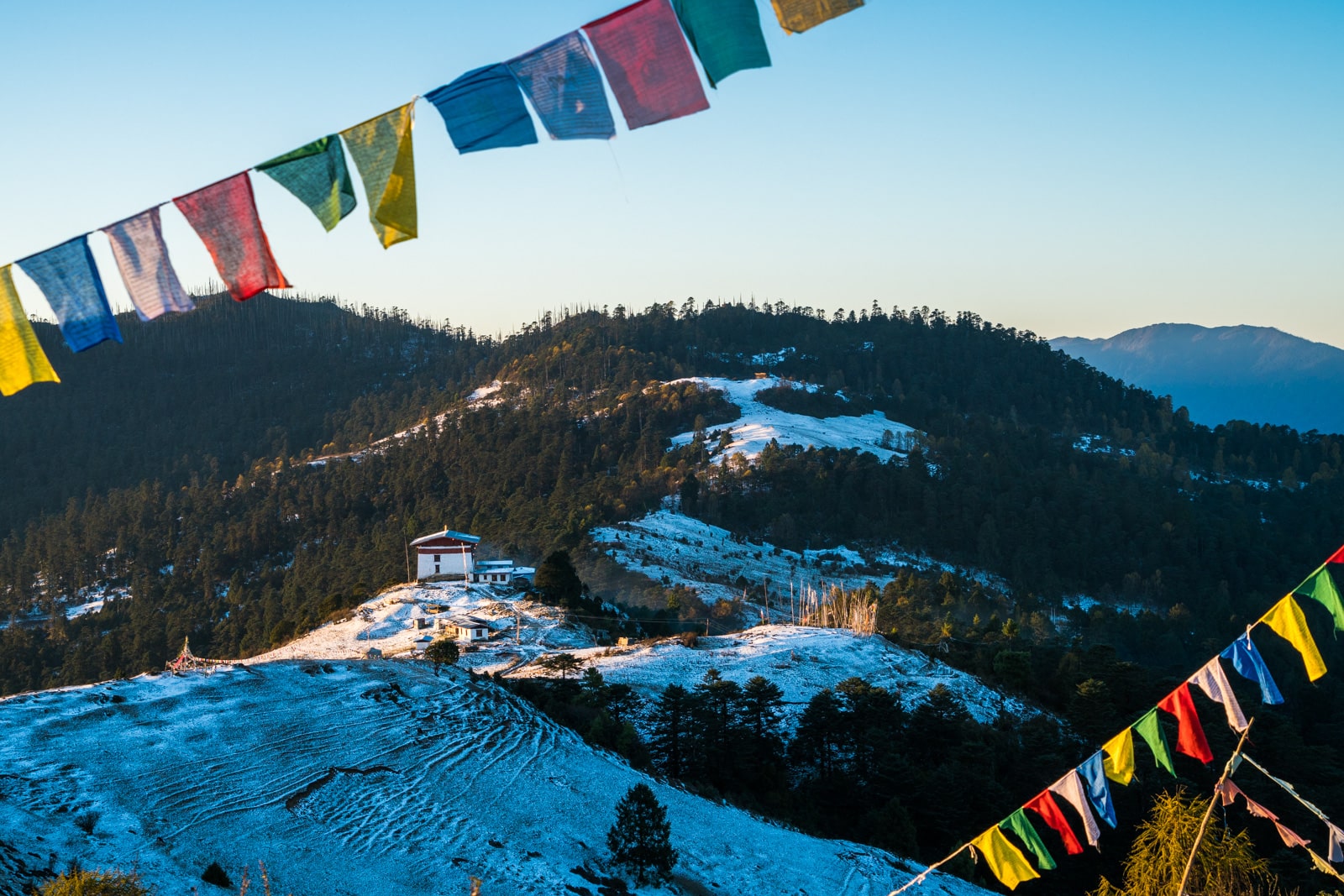
Despite the Druk Path being Bhutan’s most popular trek, there was no one to compete with for views like these.
The vast majority of people I met were are genuine and kind. They wanted to speak with me out of curiosity or interest, not because they’re scheming to sell you something as in more popular tourist destinations. Meeting local people was all too easy when I had a local tour guide by my side for (some of) the day. Even without Karma’s introductions, I still got talking with all kinds of people during my weeks in Bhutan.
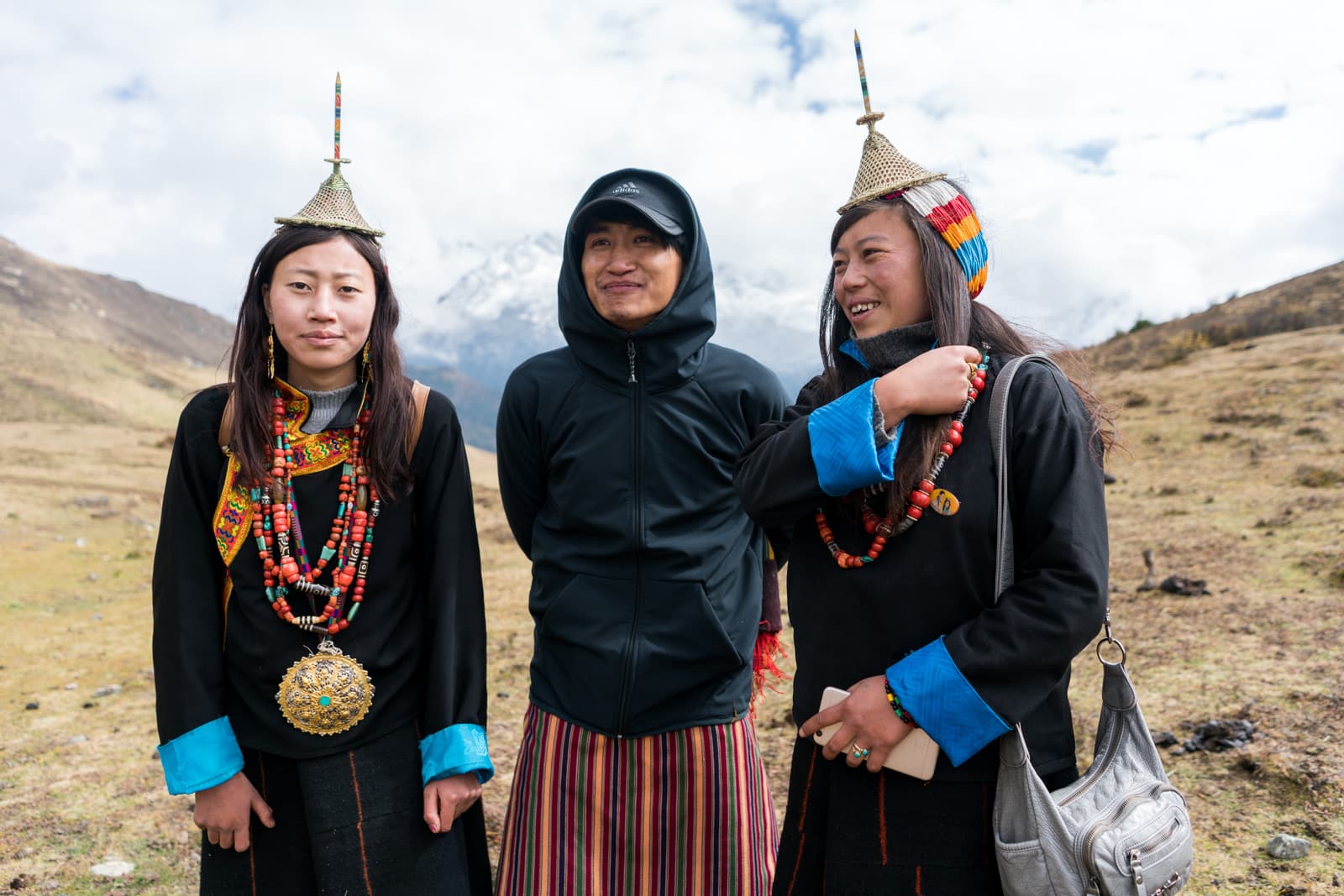
Karma posing for a photo with some local Layap ladies he introduced us to at the Royal Highlander Festival in Laya
The most straightforward reason Bhutan is worth your money, however, is the fact that it’s one of the most beautiful places in the world. In my humble opinion, anyway. Words won’t do that claim justice, so here’s some visual proof instead:
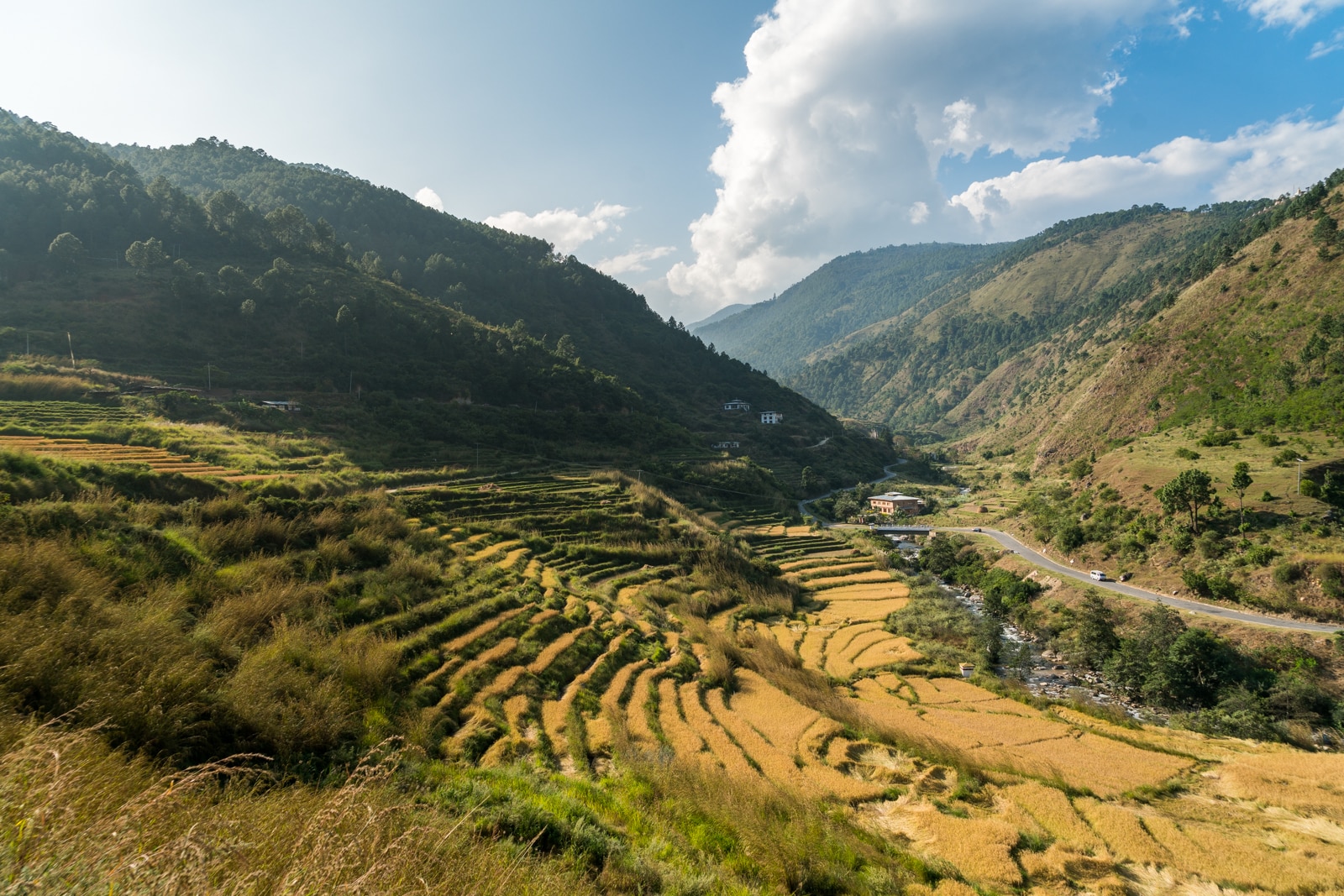
Casual highway-side views, NBD
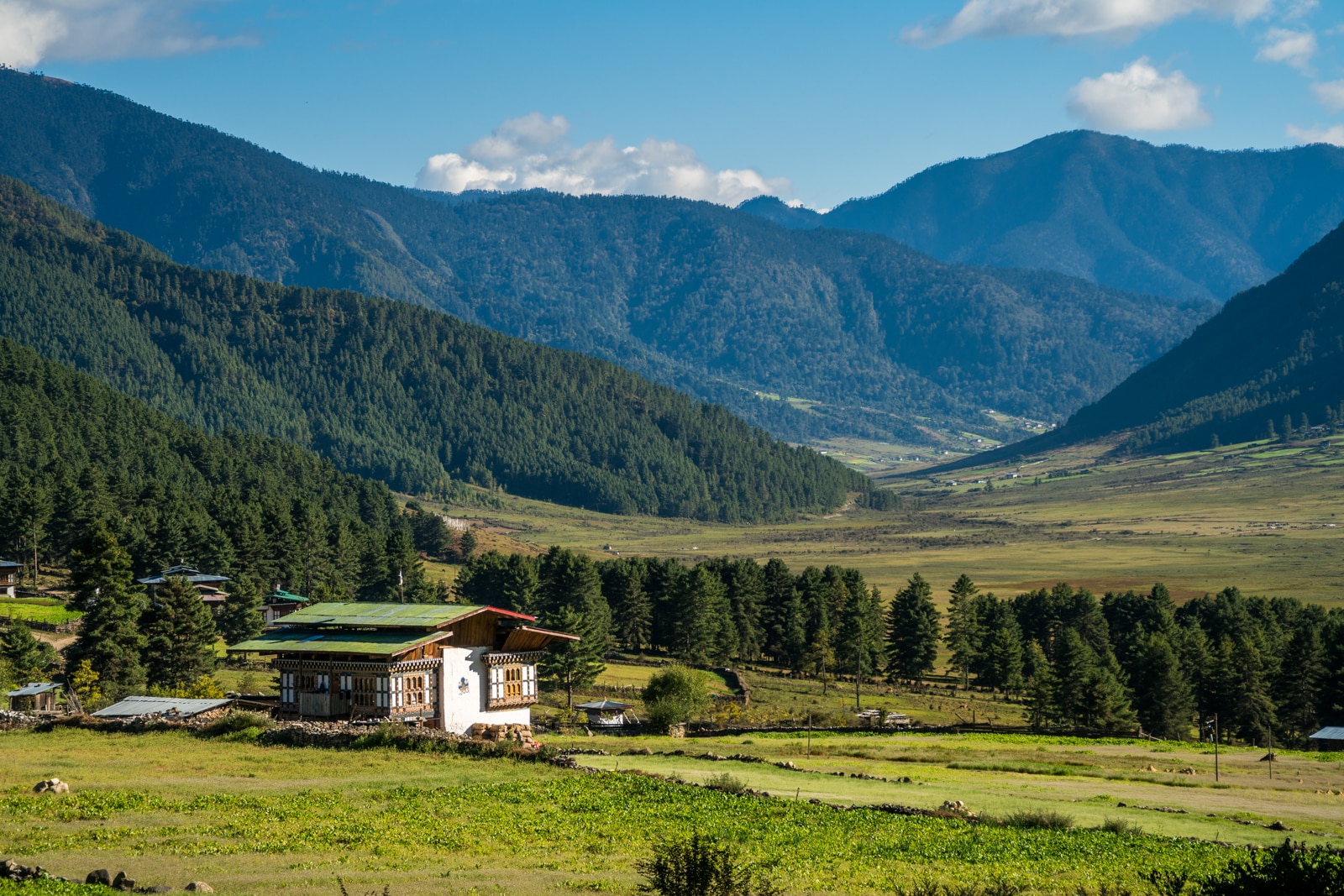
Yet more photogenic houses in the stunning Phobjikha Valley
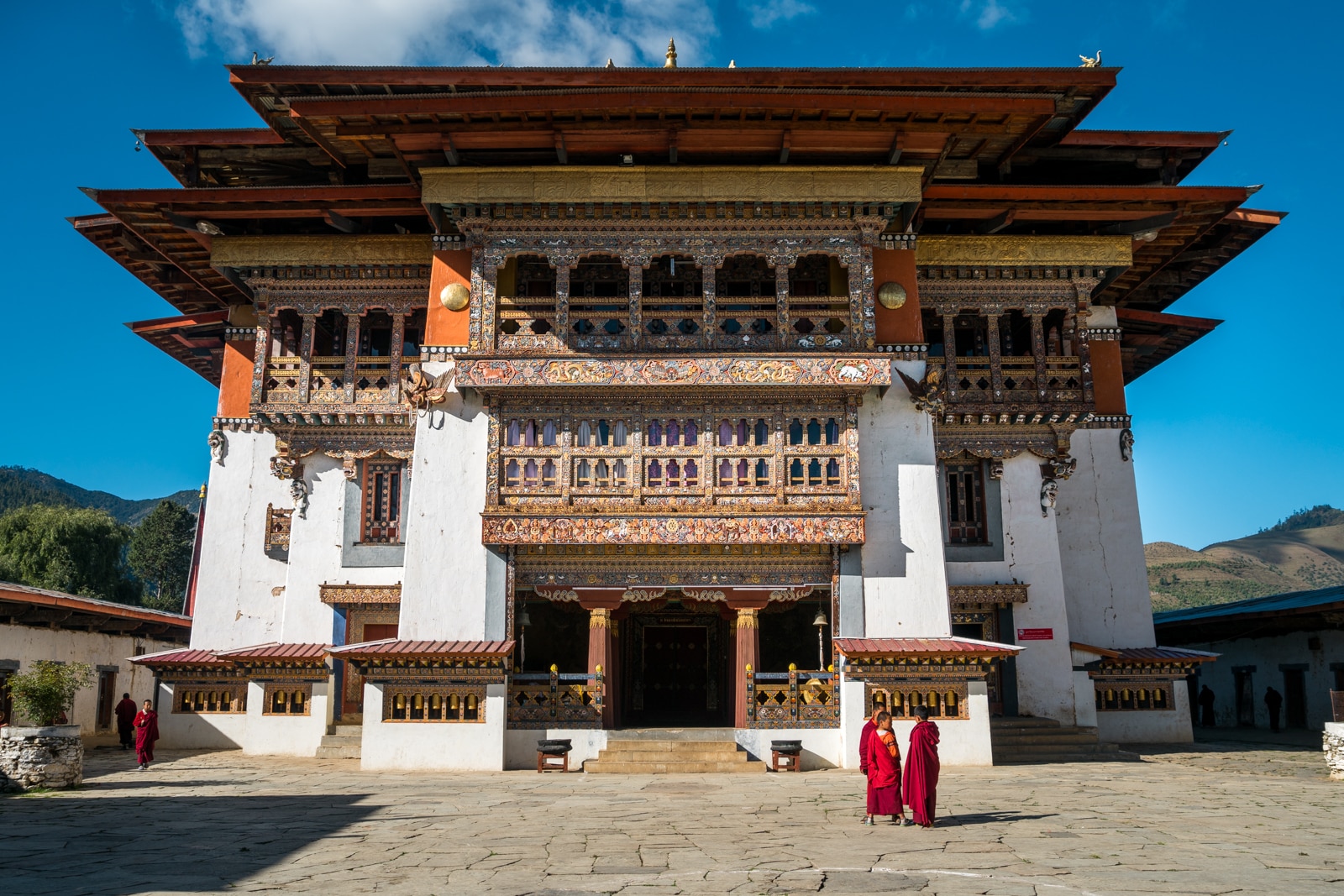
The exterior of Gangtey Monastery, the most impressive religious building I saw in Bhutan
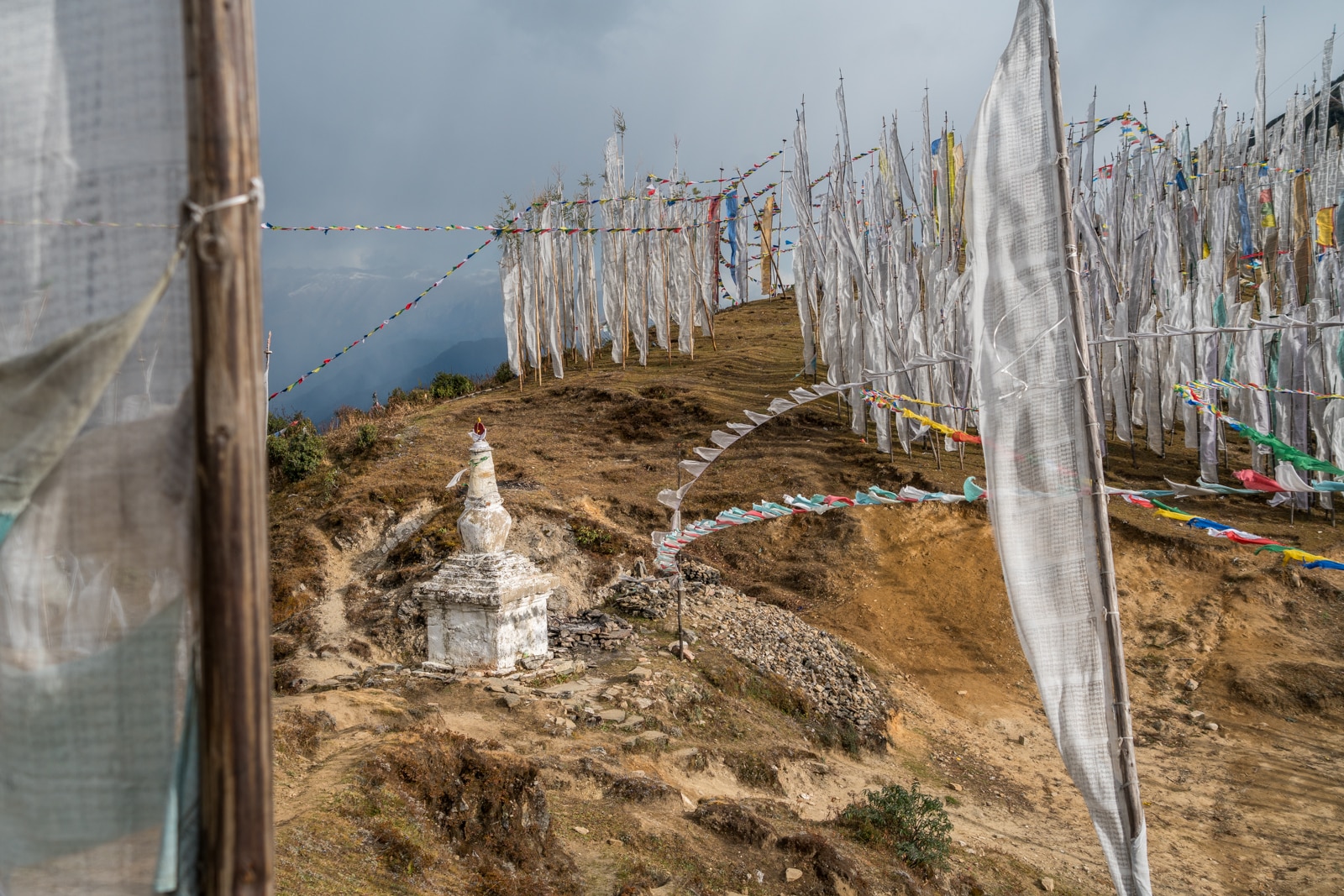
Just a few of the thousands of fluttering prayer flags atop Chele La pass
To travel to Bhutan, or not to travel to Bhutan? That is the question.
Ultimately, I can only convince you so much. Wonderful as Bhutan may be, you either have the money to visit Bhutan, or you don’t. This will decide whether travel to Bhutan is worth $250 per day or not.
If you don’t have the money, don’t fret. Though they’re worlds apart from Bhutan, there are other mountainous countries in this world that are cheaper to visit. Nepal is the crowd favorite, though I’d personally recommend Pakistan.
If, however, you do have the money, I can’t recommend Bhutan enough. It might be a big decision, but I assure you, you won’t regret it. If you are visiting Bhutan, make sure to check out my guide to travel in Bhutan.
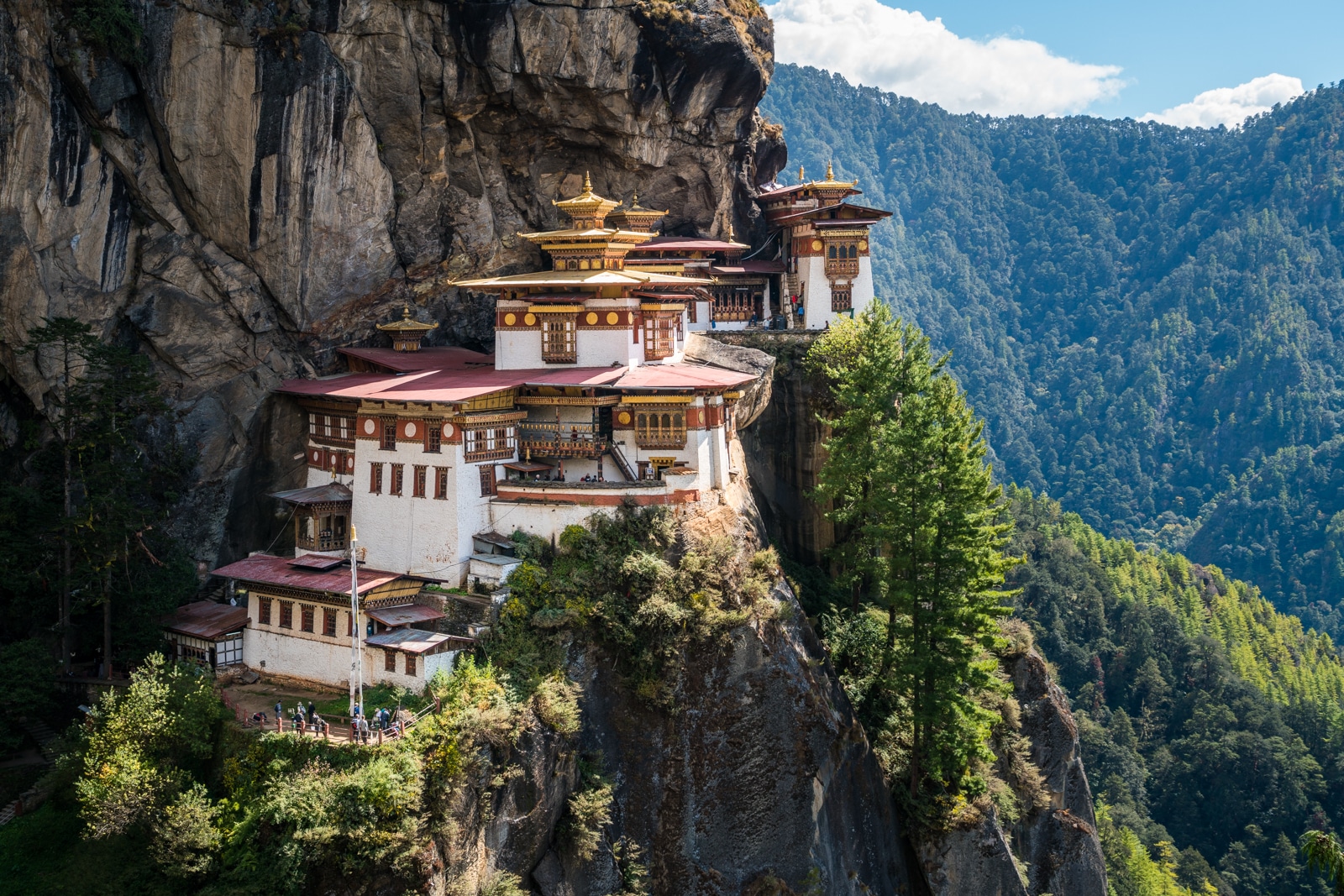
The famous Tiger’s Nest monastery near Paro
Think of it this way: choosing where to travel is like buying groceries. You can buy cheap, imported apples at your nearest supermarket, or you can head to the farmer’s market for some locally grown, organic apples. The supermarket apples may be cheaper, but we all know locally-grown apples at farmer’s markets are the responsible—and often tastier—choice.
Not everyone can afford to shop at a farmer’s market all the time, nor can everyone afford to travel to Bhutan over other destinations. But if you have the means and the motivation, I promise choosing Bhutan will be one of the most golden and delicious decisions you can make.
Yay transparency! My trip to Bhutan was sponsored by , but you can rest assured that I scrutinized the crap out of this topic just as I would if I paid my own way, and all these views are most definitely my own.
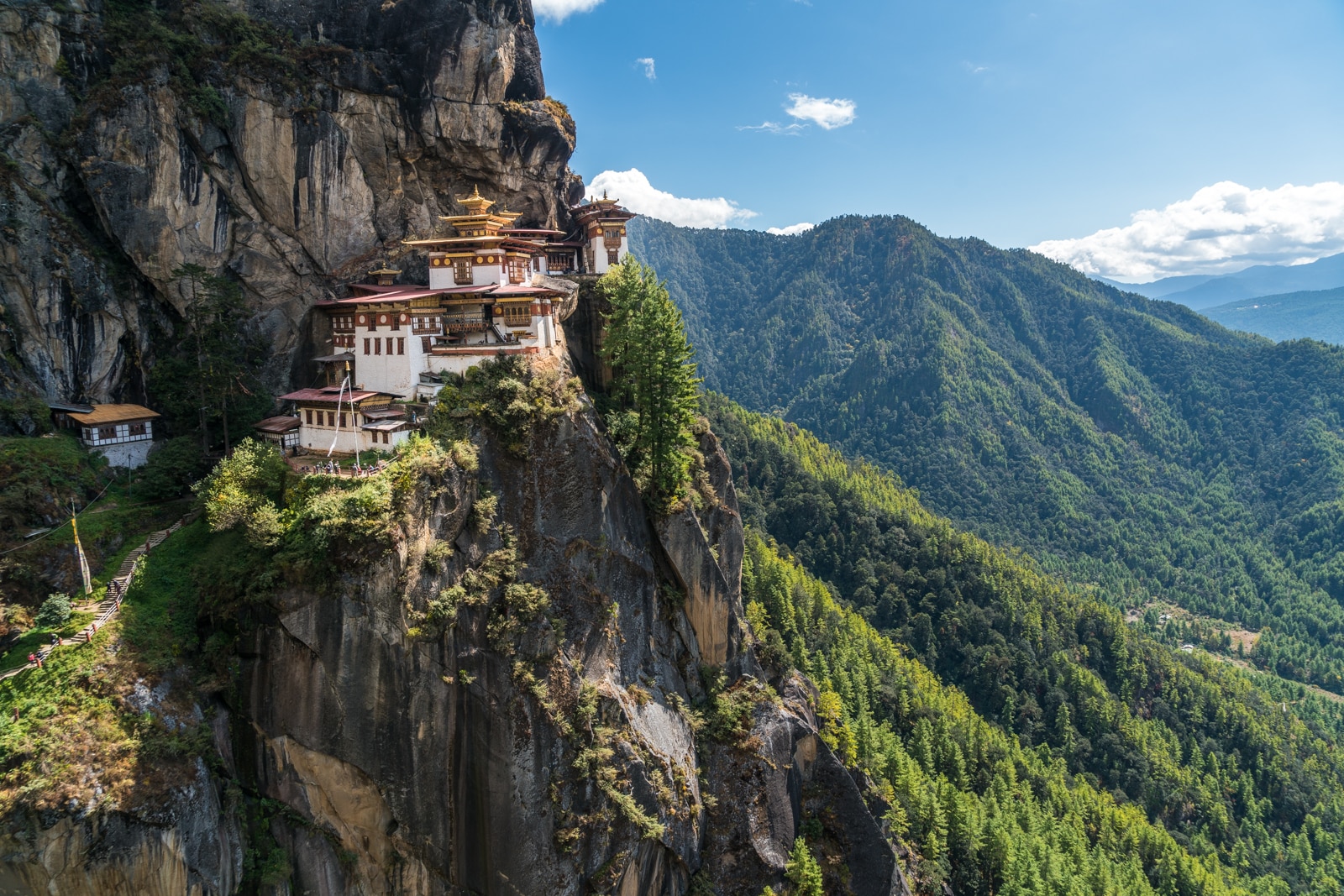
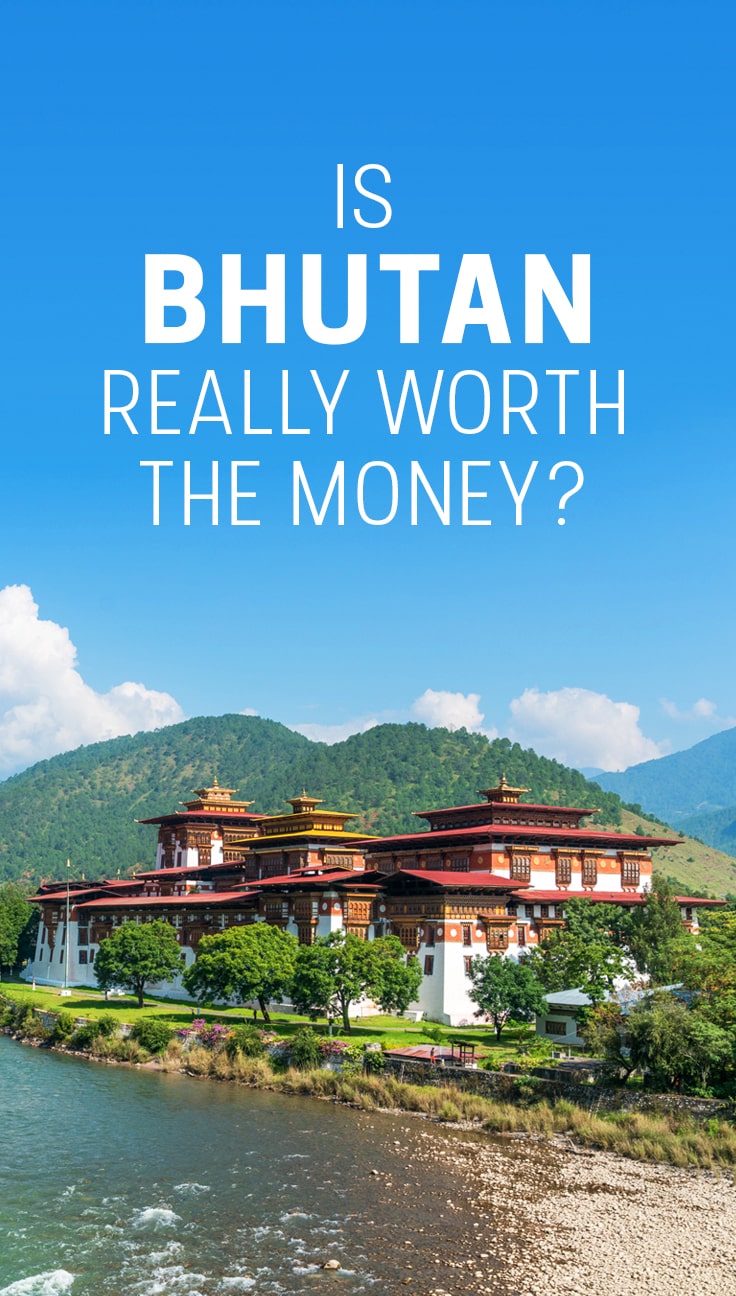
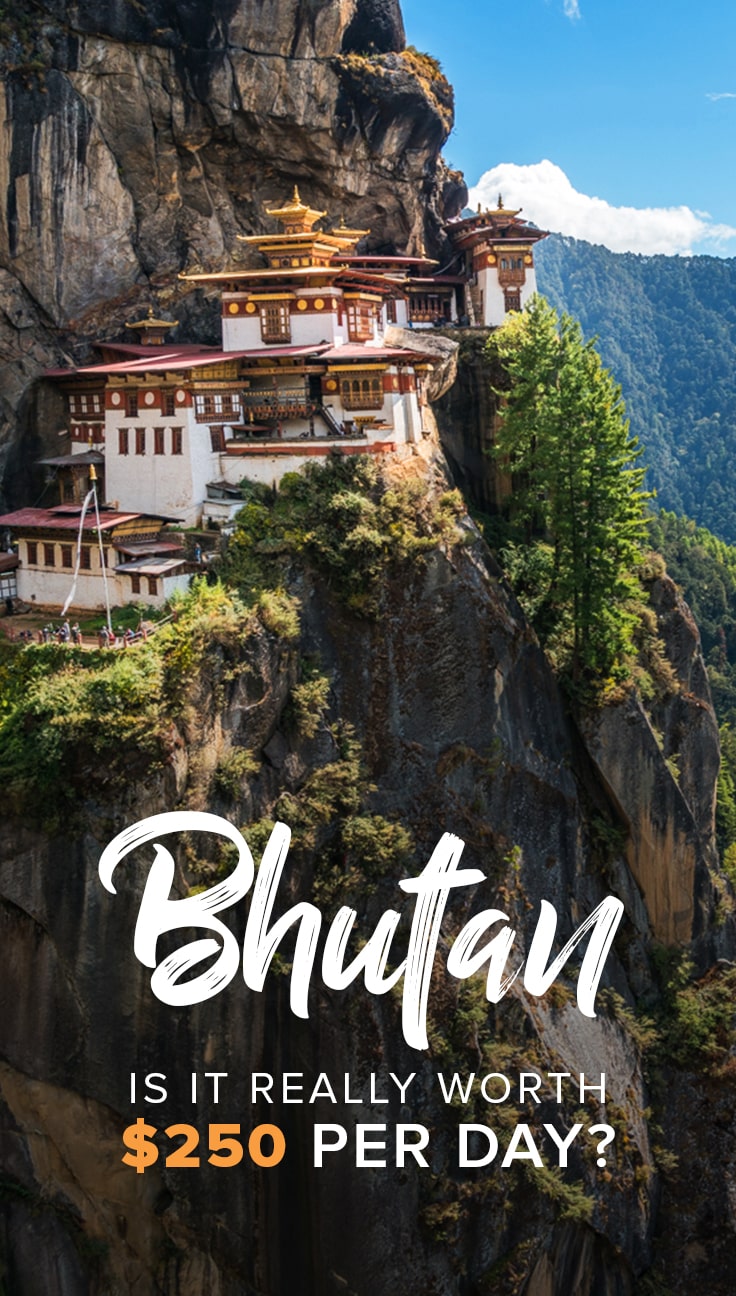
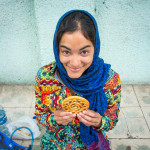

We booked a trip to Bhutan which was cancelled mid-March due to Covid restrictions for entering Bhutan. While we fortunately received our daily trip costs back from the tourism council of Bhutan (TCB), we are still struggling to get our airline ticket refund from the TCB-accredited Bhutan agent with whom we booked our travel. The airline (Druk Air) reimbursed our tickets but sent the funds to our agent. Any tips on how to file a formal complaint against the agent to get our ticket refund?
Oh no, that’s not good! I’m sorry you have to deal that. I’m not actually sure how one would file a formal complaint—can you go through the TCB? I imagine they would want to help, as it doesn’t look good if a travel agency is making things difficult for tourists.
Needgoldbar. Sopping
You really did justice to this topic. I always try my best explaining my friends why Bhutan is expensive but they never get it. Bottom line is we have put in our own share of hardwork in preserving our culture and conserving our nature in today’s chaotic time. Plus we are the only carbon negative country in the world, it’s easy to say but hard to achieve and we have achieved it. In the world where some people can’t even find fresh air to breath Bhutan removes carbon dioxide.
All in all if you are visiting Bhutan it’s a must to remember that you are paying for our preserved culture, conserved nature, fresh air, beautiful landscape, unique traditions and many more.
Thank you so much for writing this article, its insightful for people wanting to visit and very much precise with the details on the fee.
Thanks Sheldon! It’s nice to hear positive feedback from locals 🙂 I agree wholeheartedly—you’re paying for the overall experience, which you literally cannot find anywhere else in the world, and the money helps to maintain said experience.
I like hat you guys tewnd to be up too. Such clever work and exposure!
Keep up the amazing works guys I’ve dded you guys to blogroll.
Bhutan doesn’t just have strict borders… they’re preforming an ethnic cleansing and have been since the 30’s and maybe even before that. Bhutan is not a Buddhist country, the kingdom is making Bhutan a Buddist country. They are removing people and displacing them in camps in India and Nepal.
The Lhotsampa, one of the three largest ethnic groups, have sought a system of equality under which they would be allocated what they need as an equitable share of Bhutan’s polity and economy. The ruling Drukpa elites perceived the Lhotsampa as a threat to their dominance and initiated policies to oppress or force out the Lhotsampa and others through ethnic cleansing. Bhutan’s ethnic conflict and the refugee crisis it has produced are the outcome of ethnonationalism clothed in the slogan of ‘One Nation, One People’, and the contrived mechanisation of the ruling elites. The policies of these elites have effectively disenfranchised people who were born in Bhutan and have lived there for generations as citizens, for no other reason than their ethnicity. This is an issue not just for the Lhotsampa of Bhutan but also for any groups at the receiving end of an ethnically repressive order. The Lhotsampa case illustrates some characteristics of human‐rights violations in situations of ethnic strife. more than 100,000 Bhutanese people of Nepalese origin who today live in exile, mostly in United Nations High Commission for Refugees (UNHCR)‐administered camps in eastern Nepal. Former UNHCR Chief Sadako Ogata has spoken out about how the vast majority of refugees are driven from their homes by human rights abuses. As she explains, ‘Persecution, torture, killings and the reprehensible practice of “ethnic cleansing” generate a huge flow of refugees’. Her comment well describes the Lhotsampa and other Bhutanese refugees, who from 1990 were driven from their homes by the oppression and persecution of the Bhutanese government.
The unknown refugee crisis: expulsion of the ethnic Lhotsampa from Bhutan. By: Rizal, Dhurba, Asian Ethnicity, 14631369, Jun2004, Vol. 5, Issue 2
Check the source above, Im a student at the University of New Hampshire and stumbled upon this writing a paper. Its legitimate.
The Lhotsampa are not illegal immigrants, they have lived in the land for generations. The monarchy started calling them immigrants as propaganda to make removal easier. The people in those camps are considered stateless because they’ve been removed from their homes. They immigrated hundreds of years ago, and some histories argue longer. After the removal the monarchy changed the names of towns, villages, and roads to Durkpa names, then they offered the land at below-market to members of the other large ethnic group in the country ensuring that if they ever had to let the displaced Lhotsampa people back in(unlikely) they would never have a place in society. I’m convinced the Bhutans tourism industry has a role in all this.
https://journals.sagepub.com/doi/abs/10.1177/0021909605057742
Visiting Bhutan is in my bucket list but I don’t know yet if I can afford it since I will go without partner. Does anyone have any suggestions? Is there an option that I fly there myself and find tour from local businesses? Or go with travel agency from USA? If going with travel agency, which one has the best service?
Hi Terri, I am in the same situation. I have been advised to look into Hate 1 tours. Also a friend in Colorado has a friend in Nepal who may be able arrange things. I’m just looking into this possibility. $200/day now after September 2022. But I have been to Nepal and India and wished I had gone to Bhutan then. My cell is 508-246-1632
Amazing article! Just a quick update that the rules have changed completely since September 2023. Now there’s no fixed daily fee. There’s a 100usd daily Sustainable Development Fee, and the tour companies and guides can charge whatever they want for the tours and they still offer an “all-inclusive” experience (driver, accommodation, 3 meals, attraction and visa). After messaging more than 300 agencies and guides (trying to save every penny lol), I conclude that their daily rate is on average 150-200 USD – this is on top of the SDF. So in the end similar to what you paid, but the logistics are different (and I believe that long-term the tour agencies will start to charge less, so maybe tourism will be more accessible). Another change is that having a guide is still compulsory, but in the two cities of Paro and Thimphu you don’t need a guide to wander on the streets there, (however no attraction (museum, monastery, etc) will sell you entrance tickets if you don’t have one).